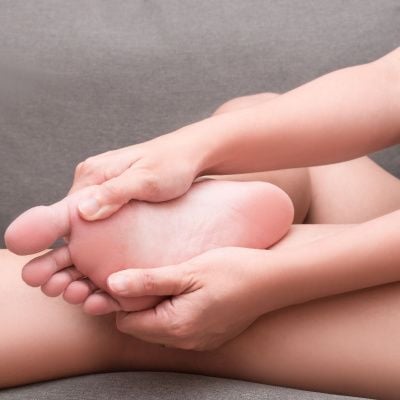 Nestled within the foot's intricate structure, the sesamoid bones play a crucial role in weight-bearing and providing a smooth surface for tendons. However, when inflammation strikes these tiny bones, a condition known as sesamoiditis emerges, causing pain and discomfort. In this comprehensive guide, we delve into the intricacies of sesamoiditis, exploring its origins, symptoms, and practical strategies for effective management.
Nestled within the foot's intricate structure, the sesamoid bones play a crucial role in weight-bearing and providing a smooth surface for tendons. However, when inflammation strikes these tiny bones, a condition known as sesamoiditis emerges, causing pain and discomfort. In this comprehensive guide, we delve into the intricacies of sesamoiditis, exploring its origins, symptoms, and practical strategies for effective management.
Understanding Sesamoiditis
-
Sesamoid Anatomy:
- The sesamoid bones, embedded within tendons, are positioned beneath the big toe joint. As natural shock absorbers, they facilitate smooth movement and weight distribution during activities like walking and running.
-
Causes of Sesamoiditis:
- High-impact activities, repetitive stress, or trauma to the foot can contribute to sesamoiditis. Ballet dancers, runners, and individuals engaged in activities involving increased pressure on the forefoot are particularly susceptible.
-
Symptoms and Signs:
- Sesamoiditis typically manifests as pain beneath the big toe joint. Pain may be gradual or sudden, exacerbated by activities that involve pushing off the toes. Swelling and bruising may also accompany the condition.
Diagnosis and Assessment
-
Clinical Evaluation:
- Healthcare professionals conduct a thorough examination, considering medical history, symptoms, and potential triggers. Understanding the patient's activity level and footwear choices is crucial for accurate diagnosis.
-
Imaging Studies:
- X-rays may be employed to visualize the sesamoid bones and assess their condition. Magnetic Resonance Imaging (MRI) or bone scans can provide detailed insights into the extent of inflammation and damage.
Effective Management Strategies
-
Rest and Activity Modification:
- The cornerstone of sesamoiditis management involves reducing stress on the affected area. Temporary activity modification and incorporating periods of rest can promote healing.
-
Footwear Choices:
- Opting for supportive, cushioned footwear with a wide toe box can alleviate pressure on the sesamoid bones. Avoiding high heels and shoes with inadequate arch support is crucial.
-
Orthotic Inserts:
- Custom or over-the-counter orthotic inserts can help redistribute pressure, providing additional cushioning and support to the forefoot.
-
Icing and Anti-Inflammatory Medications:
- Applying ice to the affected area can help reduce inflammation. Nonsteroidal anti-inflammatory drugs (NSAIDs), under medical supervision, may also be recommended.
Physical Therapy and Rehabilitation
-
Gentle Stretching Exercises:
- Physical therapists may prescribe gentle stretching exercises to maintain flexibility and reduce stiffness in the big toe joint.
-
Strengthening Regimens:
- Strengthening the surrounding muscles can enhance foot stability and provide better support to the sesamoid bones.
When to Seek Professional Help
-
Persistent Pain:
- If sesamoiditis pain persists despite conservative measures, seeking professional medical advice is crucial to explore further interventions.
-
Severe Swelling or Bruising:
- Experiencing severe swelling, bruising, or difficulty bearing weight on the foot requires prompt evaluation by a healthcare professional.
Preventing Sesamoiditis Recurrence
-
Gradual Return to Activities:
- Individuals recovering from sesamoiditis should gradually reintroduce activities, focusing on proper warm-up and incorporating adequate rest periods.
-
Footwear Assessment:
- Regularly assessing footwear for signs of wear and tear and ensuring proper support can play a pivotal role in preventing sesamoiditis recurrence.
Conclusion
Sesamoiditis, while presenting challenges, can be effectively managed through a combination of conservative measures, footwear choices, and professional guidance. From understanding the anatomy of sesamoid bones to recognizing symptoms and exploring diverse management strategies, this guide aims to empower readers with valuable insights into sesamoiditis. If you suspect sesamoiditis or are grappling with persistent foot pain, consulting with a healthcare professional for personalized guidance is essential. By fostering awareness and adopting practical measures, individuals with sesamoiditis can enhance their quality of life and proactively address the discomfort associated with this condition.
Disclaimer:
The information on this website is provided for educational and information purposes only and is not medical advice. Always consult with a licensed medical provider and follow their recommendations regardless of what you read on this website. If you think you are having a medical emergency, dial 911 or go to the nearest emergency room. Links to other third-party websites are provided for your convenience only. If you decide to access any of the third-party websites, you do so entirely at your own risk and subject to the terms of use for those websites. Neither Associated Podiatrists PA, nor any contributor to this website, makes any representation, express or implied, regarding the information provided on this website or any information you may access on a third-party website using a link. Use of this website does not establish a doctor-patient relationship. If you would like to request an appointment with a health care provider, please call our office at (913) 321-0522.

